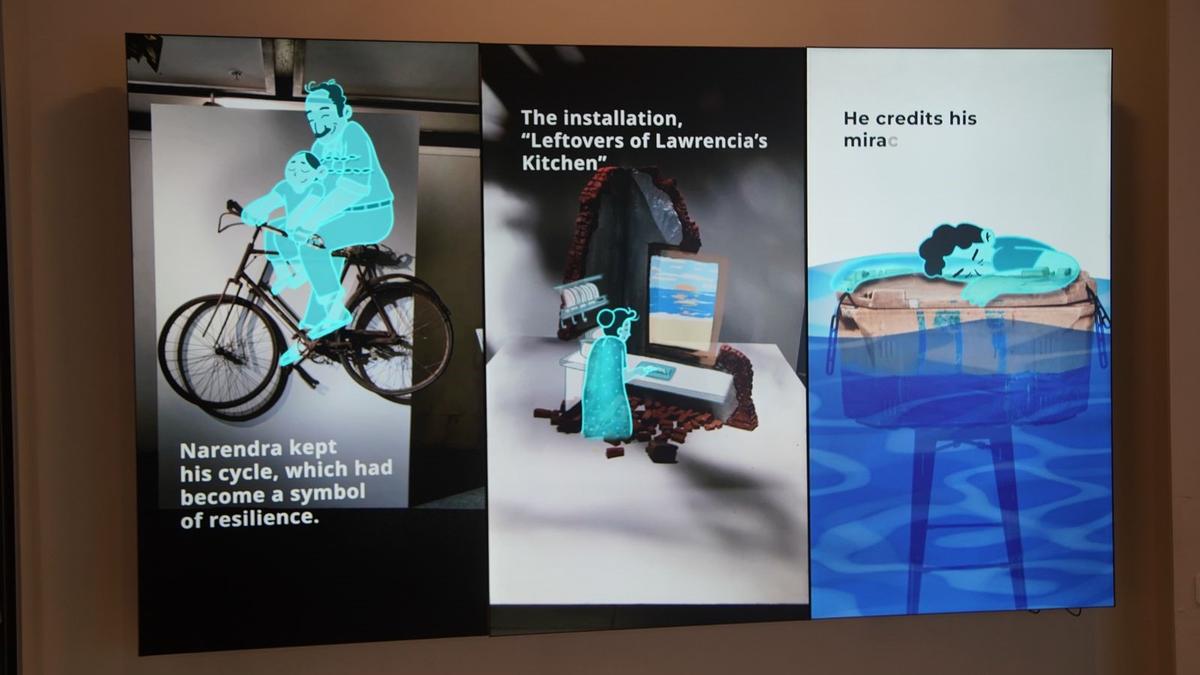
Bengaluru exhibition showcases climate change through people and their objects
The Hindu
“When we read and talk about climate change, it’s mostly a lot of data, research and statistics. But these are not just numbers, they are real people who are facing climate crisis in their daily lives. We reached out to communities across the country, and we collected very individual stories of these losses from whether it is a heat wave, cyclone or so on,” he says.
While the world gathers in Baku, Azerbaijan, for COP29, the one question that people in developing countries are grappling with is how much of these talks will lead to change at the grassroots. From forest fires to heatwaves and flooding, it is the poor and the marginalised who have to bear the brunt of climate change.
In this backdrop, Greenpeace India and the Museum of Art and Photography (MAPS), Bengaluru, are hosting the Climate at the Margins: Gender, Class and Caste Vulnerabilities exhibitionon November 16 and 17 at MAPS. The exhibition aims to bring forth real people and their stories of loss, survival and resilience in the face of the climate crisis. After showcasing their work in Chennai and Delhi, the exhibition has arrived in Bengaluru, in the form of a digital museum.
The exhibition showcases everyday objects of people who have endured extreme weather events in different parts of India. Artist Sabari Venu, who has designed the exhibition, says, “We combined various visual and storytelling techniques with the museum’s technology to sensitively bring these stories to life.... We are sharing the raw, human stories.”
Avinash Chanchal, Deputy Programme Direct at Greenpeace, talks about how with COP underway, where every day we are hearing a lot of discussion on loss and damage, the question that comes up is: “What does it really mean for the people and for the community who are at the forefront of this damage?”
“When we read and talk about climate change, it’s mostly a lot of data, research and statistics. But these are not just numbers, they are real people who are facing climate crisis in their daily lives. We reached out to communities across the country, and we collected very individual stories of these losses from whether it is a heat wave, cyclone or so on,” he says.
Amruta S.N., climate campaigner at Greenpeace, highlights how those most affected by climate disasters are often the ones who are the least responsible for them. “It is quite clear that the big oil or the fossil fuel industry has been historically responsible for more than 80% of the climate emissions that has led to the climate crisis.... However, when you look at the profit that they have been reaping, it is more than two billion a year at the cost of marginalised communities,” she said.
When we look at cyclones or heatwaves the worst affected are the people who live on the coastline, who engage in vocations such as fishing, agriculture etc. Even during the heatwaves, it is always the landless or small to medium land-owning farmers who suffer. “Polluters must pay for the losses and damage. It should not be the least polluting communities that pay,” said Amruta.

Udupi-Chikkamagaluru MP Kota Srinivas Poojary said on Saturday that the State government has decided to reject the Centre’s fresh draft notification on Kasturirangan committee report on conservation of the Western Ghats. Hence, people’s apprehension on the implementation of the report is unnecessary.










